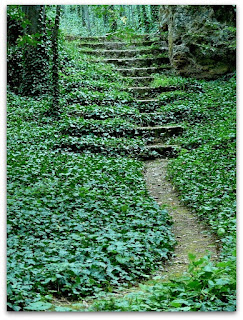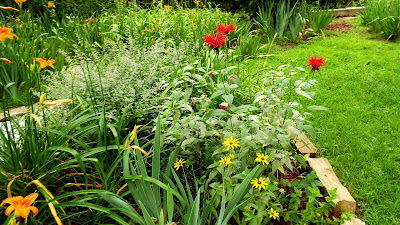There is a meadow located on the south side of my home and wildflowers and switchgrass grows there. In the spring I will plant red clover and zinnias so that the wildlife will have food and flowers will bloom in late summer.
I love this wildflower garden but would like to update it with a rock wall and garden gate. I like the idea of creating a space that is secret or private as if it was a sanctuary for animals and people to rest and relax.
Garden Ideas
Growing wildflowers in the garden is not difficult. You would plan the location for wildflowers. Then turn over the soil with a tiller or shovel and plant your wildflower plants or seeds in a garden that provides the plants with proper growing recommendations. The wildflowers that I grow need full to-part sun and well-drained soil.
Before you buy flower seeds read the growing requirements, then you will know what part of your yard is best for growing wildflowers.
| Coneflowers and Daises a photo of my garden |
 |
| A garden path was created by cutting this area low to the ground with a grass trimmer. |
 |
| Transplants growing nicely in the garden |
Amend the soil if needed I always like to mix compost because it will enrich the soil with nutrients. Plant seeds or seedlings then add a thin layer of straw.
Then create a garden path. One way to create a path is to use your grass trimmer or lawnmower to cut down the grass low to the ground. Then cover this area with landscape weed control fabric. Top this with mulch, or gravel.
I recommend a spring planting of flower seeds because of the rains that come during this season. Seedlings need to be watered and ground evenly moist but not wet. The rain will provide the wildflower plants with ample hydration and a good start at being healthy.
Buy wildflower seeds in bulk, and shop for the flowers that will grow best in your growing zone.
Learn more about wildflowers and attracting wildlife by reading these articles.










